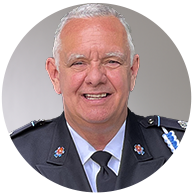Blog
Is Massage Therapy a Good Treatment for Cerebral Palsy?
If your child or loved one has been diagnosed with cerebral palsy (CP), then you’re probably already working with your doctors to find the best and most appropriate treatments. In addition to the medical and/or surgical treatment your child is receiving, you may have considered alternative or complementary treatments. Massage therapy for cerebral palsy is one of several such treatments that can be used alongside medicine, surgery, physical therapy, or whatever else your doctor recommends.
Cerebral palsy massage treatment can have physical as well as emotional and psychological benefits for patients. Read on to learn more about massage therapy for cerebral palsy, and talk to your doctor to learn more about massage as a complementary treatment.
What Is Massage Therapy?
Massage therapy is a treatment where a trained massage therapist provides direct pressure with their hands, arms, or elbows to different parts of a client’s body to stimulate muscles, connective tissues, ligaments, and tendons.
There are two major forms of massage therapy:
- Relaxation: This form focuses on alleviating stress and anxiety, typically through targeting areas of the body that house the hormones that affect stress and anxiety or areas with key tension points that can be relieved.
- Rehabilitative: This form is meant to help ease pain and tension to restore mobility and flexibility throughout the body.
Depending on your child’s or loved one’s CP-related symptoms, one or both forms of massage therapy may be used to help improve their overall wellness.
What Are the Potential Benefits of Massage Therapy for Kids With CP?
If you’ve ever received a massage at a spa or health center to relax and de-stress, then you may already be familiar with some of the physical and emotional benefits of massage. But massage therapy may also have benefits that are specific to cerebral palsy patients, although the National Institutes of Health (NIH) says that more research is needed before massage therapy can be freely prescribed for any child with CP.
In addition to and working alongside other treatments, cerebral palsy massage techniques provide specific benefits for people who have CP, including:
- Concentration and calmness: Cranial stimulation can lead to a sense of calmness, as well as improved concentration and focus.
- Easing physical symptoms: Researchers and physicians have found that specific massage techniques can reduce the symptoms of CP, including pain, by increasing blood flow. Benefits of massage, for example, include stimulating deeper layers of muscle tissue via massage to reduce the spasticity and stiffness that many children with CP experience.
- Better digestive health: Massage therapy can help relieve the digestive symptoms that many children with cerebral palsy experience, by helping to release digestive enzymes, reducing bloating and gassiness, stimulating the muscle contractions that aid digestion (peristalsis), and more.
- Increased circulation: Massage can stimulate circulation, a benefit for CP patients who have immobility issues that can lead to decreased circulation.
- Better sleep: Parents of children with cerebral palsy report that massage therapy can help their children fall asleep more quickly and stay asleep longer. Research from the American Massage Therapy Association (AMTA) supports this.
Consult with your doctor to learn more about whether your child’s symptoms could be alleviated or reduced by massage therapy.
What Kinds of Facilities Offer Massage Therapy?
Massage therapy for cerebral palsy can take place in a number of different settings. At the most basic level, your doctor or physical therapist may be able to show you a few simple massage techniques that you can use with your child at home.
If you are looking for a professional massage facility for your child, make sure to search for massage therapists who are certified and have experience working with children who have CP. Common places to find a certified massage therapist include:
- Hospitals
- Athletic centers and sports clubs
- Physical therapy centers
- Health clinics
There are also some massage therapists who are able to make home visits and can administer massage therapy right in your home.
Your massage provider should be able to work with your doctor and the rest of your child’s care team to coordinate the most effective program for their needs.
When Should Children Not Receive Massage Therapy?
While massage therapy can have a number of benefits for children with cerebral palsy, there are also some reasons that it may not be advisable for a child to receive massage therapy. Your doctor may warn you not to pursue massage therapy if your child has any of these symptoms:
- Open sores
- Fever
- Broken bones
- Acute infections
- Muscle or joint inflammation
- Blood clots
- Received vaccinations within the past 72 hours
- Varicose veins
- Diarrhea
- Osteoporosis
- Hernia
What Else Do I Need To Know About Massage Therapy?
Massage therapists are certified in their field, but there are certain types of advice and services they are not able to provide. That includes:
- Any medical advice
- Nutrition or diet counseling
- Surgery or cosmetic services
- Psychological counseling
Massage therapy is one of many treatments for children with cerebral palsy that can be used in combination with other treatments to improve overall well-being and reduce symptoms. If you believe your child’s or loved one’s cerebral palsy may have been caused by medical malpractice, contact the experienced Cerebral Palsy Family Lawyers at Janet, Janet & Suggs, LLC to see if you may be able to get compensation and justice.

William R. “Topper” Cramer, RN, MBA, MS, CCRN, CFRN, EMT-P
Legal Nurse Consultant | Nurse Paralegal
Topper has been involved in emergency, transport, and critical care medicine since 1978 when he became an EMT in high school. A United States Air Force veteran, he remains active as a pre-hospital RN/paramedic, certified flight nurse, and critical care nurse. In addition to his professional role as a nurse consultant/nurse paralegal, he is the Chief of Operations at Walkersville Volunteer Rescue in Frederick County, Maryland. READ FULL BIO
